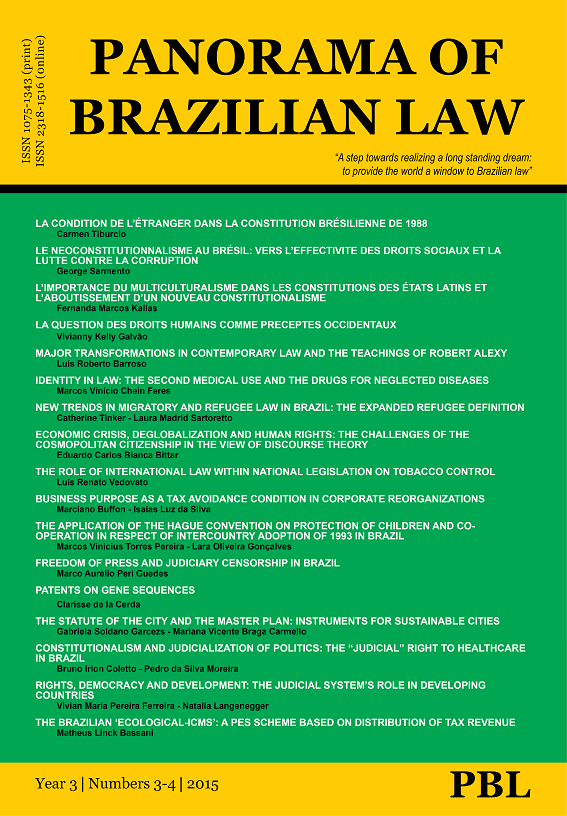MAJOR TRANSFORMATIONS IN CONTEMPORARY LAW AND THE TEACHINGS OF ROBERT ALEXY
DOI:
https://doi.org/10.17768/pbl.y3.n3-4.p107-123Abstract
The text examines the three major changes of paradigm in contemporary law, seen in parallel to Robert Alexy’s teachings. The author initially presents the phenomena of (i) the overcoming of legal formalism; (ii) the advent of a post-positivist legal culture; and (iii) the rise of public law and the centrality of the Constitution. The author then moves on to identify, in the work of Robert Alexy, the notion of the centrality of fundamental rights and of the Constitution, in contemporary law. The author also tackles the transformations in constitutional interpretation, focusing on (i) the recognition of the normative force of the Constitution; (ii) the expansion of constitutional jurisdiction; and (iii) the development of a new hermeneutics and of the new categories for a constitutional interpretation. Following this line, the notion of hard cases is approached against the background of ambiguity in language, reasonable moral disagreements and tensions in constitutional norms or fundamental rights. Alexy’s theory of principles is then introduced to portray how law should be operated so as to solve relevant conflicts in modern society. Finally, there is an emphasis on the counter-majoritarian and representative roles of the Supreme Federal Tribunal, as well as on Alexy’s writings about how constitutional tribunals carry out the argumentative representation of society.
Downloads
Pubblicato
Come citare
Fascicolo
Sezione
Licenza
Panorama of Brazilian Law employs Open Journal Access policies.
Authors are fully and exclusively responsible for their submissions.
Authors who publish with this journal agree to the following terms:
- Authors retain copyright and grant the journal right of first publication with the work simultaneously licensed under a Creative Commons Attribution-NonCommercial-ShareAlike 4.0 International License that allows others to share the work on a non-comercial basis with an acknowledgement of the work's authorship and initial publication in this journal and indicating if any changes were made. If you remix, transform, or build upon the material, you must distribute your contributions under the same license as the original.
- Authors are able to enter into separate, additional contractual arrangements for the non-exclusive distribution of the journal's published version of the work (e.g., post it to an institutional repository or publish it in a book), with an acknowledgement of its initial publication in this journal.

